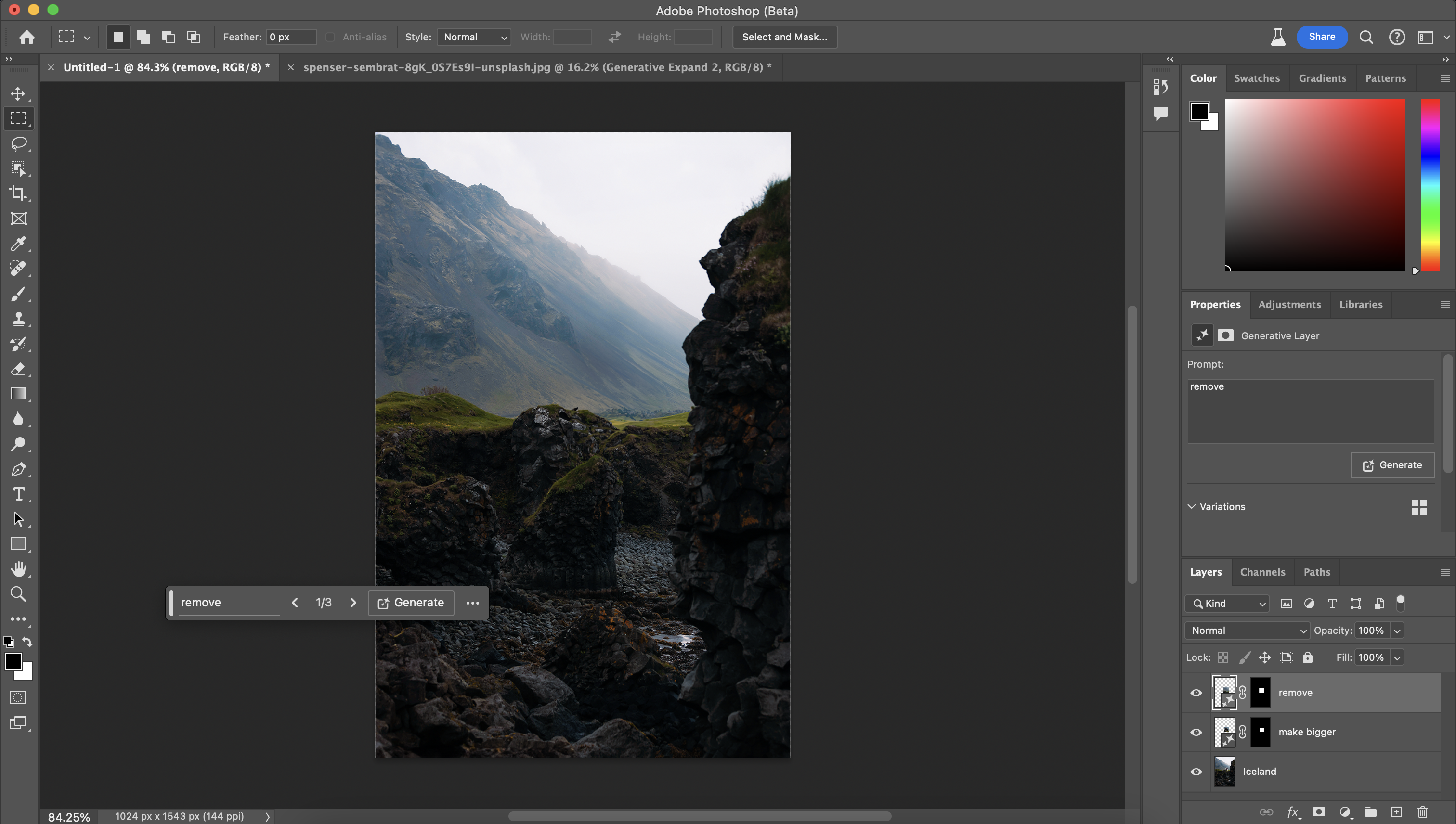Alternatives to Canva
1. Adobe Creative Cloud (Photoshop AI)
+Pros
- Ecosystem integration and enterprise compliance create sustainable competitive advantages.
- 'Commercially safe' training data with litigation protection addresses IP concerns affecting 28% of enterprise AI deployments.
- Workflow integration depth eliminates friction affecting competitors, enabling session times averaging 26 minutes compared to 42 minutes for traditional design tools.
-Cons
- Technical generation quality where DALL-E 2 achieves superior FID scores (10.39) for image realism.
- Implementation complexity requires 3-6 months with dedicated ML engineering support (3-5 engineers per deployment).
One highlighted feature and why it's amazing
Core AI functionality centers on Generative Fill, background removal, and in-app content creation that eliminates external editing requirements.

Another highlighted feature of why it’s amazing
Enables brand-specific training on proprietary assets requiring 10-30 training images and dedicated storage administration.
2. Clad AI
+Pros
- Ecommerce specialization with features specifically designed for product imagery workflows
- AI fashion models reduce traditional model shoot costs by 60% while maintaining consistent garment positioning
- Customizable brand styling via API enables visual consistency across product catalogs and marketplaces
-Cons
- Potential output inconsistency with reflective products like jewelry
- Absence of integrated Digital Asset Management (DAM) capabilities for enterprise clients
One highlighted feature and why it's amazing
Creates commerce-optimized scenes from text prompts, enabling retailers to generate contextual product environments without expensive photoshoots.
Another highlighted feature of why it’s amazing
Addresses lighting and color inconsistencies in user-generated content at scale.
Other Alternatives
Pebblely
Photoroom
Removebg
How We Researched This Guide
About This Guide: This comprehensive analysis is based on extensive competitive intelligence and real-world implementation data from leading AI vendors. StayModern updates this guide quarterly to reflect market developments and vendor performance changes.
206+ verified sources per analysis including official documentation, customer reviews, analyst reports, and industry publications.
- • Vendor documentation & whitepapers
- • Customer testimonials & case studies
- • Third-party analyst assessments
- • Industry benchmarking reports
Standardized assessment framework across 8 key dimensions for objective comparison.
- • Technology capabilities & architecture
- • Market position & customer evidence
- • Implementation experience & support
- • Pricing value & competitive position
Research is refreshed every 90 days to capture market changes and new vendor capabilities.
- • New product releases & features
- • Market positioning changes
- • Customer feedback integration
- • Competitive landscape shifts
Every claim is source-linked with direct citations to original materials for verification.
- • Clickable citation links
- • Original source attribution
- • Date stamps for currency
- • Quality score validation
Analysis follows systematic research protocols with consistent evaluation frameworks.
- • Standardized assessment criteria
- • Multi-source verification process
- • Consistent evaluation methodology
- • Quality assurance protocols
Buyer-focused analysis with transparent methodology and factual accuracy commitment.
- • Objective comparative analysis
- • Transparent research methodology
- • Factual accuracy commitment
- • Continuous quality improvement
Quality Commitment: If you find any inaccuracies in our analysis on this page, please contact us at research@staymodern.ai. We're committed to maintaining the highest standards of research integrity and will investigate and correct any issues promptly.